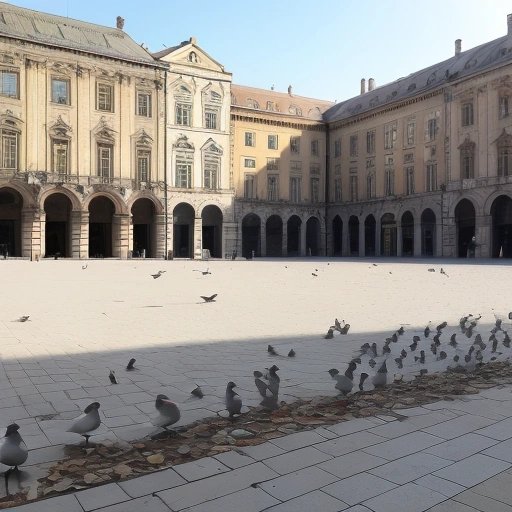Friday dawned like any other day in the ever-bustling metropolis. Skyscrapers scratched at the belly of the overcast sky, traffic honked and groaned, and pedestrians prepared for another morning of navigating the city's labyrinthine streets. There was, however, an unusual stillness. The usual soundtrack of cooing had been replaced with an uncanny silence. The city's ubiquitous pigeons, it seemed, had disappeared overnight.
Citizens were oblivious to this strange occurrence until they noticed the oddly clean sidewalks and the conspicuous absence of the feathery flappers. Park goers experienced the surreal sight of lonely, unrummaged garbage bins, devoid of their usual flock of scavengers. Brunch enthusiasts, for the first time, enjoyed alfresco dining without the inadvertent avian audience. Indeed, the typical feather-filled fiasco was conspicuously absent.
As hours trickled into days, the metropolitan echo-chamber began to hum with wild theories attempting to explain the feathered fugitives' sudden disappearance. Some claimed a mass pigeon migration, a hitherto unheard-of phenomenon. Conspiracy theorists contended that the city's pigeons were, in fact, avian spies and had been suddenly called back to their respective intelligence agencies for an urgent briefing.
Comic enthusiasts humorously speculated about an abominable pigeon supervillain, amassing an army of mutants in his clandestine underground lair. Always ready to point to the latest dire consequence of climate change, environmentalists assumed that these innately urban birds had finally decided to migrate back to the wild, abandoning the city's contaminated air, noise, and general chaos for greener pastures.
In a city bereft of its feathered populace, one cannot escape the profound realization of how tightly the lives of urban pigeons and city dwellers are intertwined. From the retired folks amusingly engrossed in feeding pigeons in public parks to the blissfully oblivious toddler baptizing the hungry horde with breadcrumbs, these unassuming feathery companions have become a particularly salient part of the city's soul.
Most troublingly, would a world without pigeons lead to a spiral of negative effector the ecosystem? Renowned city ecologist, Alfred Wingtips, warns of such a doomsday scenario. "Pigeons, often viewed as city pests, play crucial ecological roles. Their dietary practices, as unappetizing as they may seem, are important for waste control. Their droppings even contribute to nutrient cycles."
In a dramatic turn of events, an anonymous, pigeon-themed manifesto was found nestled in the city newspaper's "Lost and Found" section. It revealed the clandestine operation had been orchestrated by the Pigeon Protection Legion - an unknown secret society of 'pigeon admirers,' who deemed it necessary to 'save' the city's pigeon populace from what they dubbed as 'the unfettered urban catastrophe.'
It seems the case of the missing pigeons will only grow murkier before the truth ultimately unfurls. For now, the citizens are left grappling with the uncanny quiet, unusually clean sidewalks, and the enigma of the vanishing feathered friends. The sky, too, looks a little less busy without the whirl of wings against the cityscape. For the time being, it appears that the pigeons, the unsung heroes of urban biodiversity, have had the last coo.


